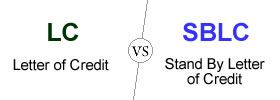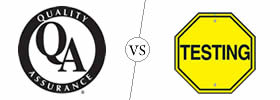Difference between Gorilla Glass and Sapphire
Key Difference: Gorilla Glass and Sapphire are two types of protective coverings that reduce the possibility of screen breakage. Gorilla Glass is a type of alkali-aluminosilicate sheet toughened glass, while Sapphire Glass is in fact a crystalline sheet made out of commercially developed sapphire.

Anyone who owns a smartphone lives in perpetual fear to scratching and/or breaking their phone’s display screen. It is not even funny how easy it is to break a display screen, just one fall and the screen is gone. That was the case, however latest developments have released a protective covering for smartphones that reduce the possibility of screen breakage. Gorilla Glass and Sapphire are two such protective coverings.
Gorilla Glass is a type of alkali-aluminosilicate sheet toughened glass, which means that it is made by immersing the glass sheet in a molten alkaline salt bath. Gorilla Glass was created by Corning Inc. and was first launched in 2007. Corning started developing Gorilla Glass in 2005, in response for Apple Inc. asking for a type of toughened glass thin enough which could be used in consumer electronics, such as its new iPhone. Gorilla Glass was modifies from Corning’s "Chemcor" glass which was created in 1960.Currently, Gorilla Glass is used as the top covering on the display screen of numerous electronics such as smartphones, DVD players, mobile gaming consoles, MP3 players, etc. Its main advantages are thinness, lightness, and damage-resistance.
After its first reiteration, Corning has continued to develop the Gorilla Glass. Gorilla Glass 2 which was launched in 2012 was 20% thinner than Gorilla Glass and 20% more damage resistant. Gorilla Glass 3, launched in 2013, is three times more damage resistant than Gorilla Glass 2, and 40% more scratch-resistant. It is also less brittle and much tougher and flexible than the previous generations of Gorilla Glass. It also comes with silver ion doping that can effectively kill over 90% of bacteria. Corning has recently launched the Gorilla Glass 4, which it claims is twice as strong as any other cover glass in the market. It is also 20-25% thinner than Gorilla Glass 3.
Sapphire Glass is actually not a glass at all; it is in fact a crystalline sheet made out of commercially developed sapphire. Sapphire is a type of gemstone that occurs naturally. It comes in various colors, red, green and most popular, blue. However, the natural color of sapphire is clear, and it takes on other colors due to impurities.
The process of creating sapphire artificially was developed in 1905. Sapphire crystals are created by applying high heat to purified aluminum oxide in a cylinder called a boule, which is then sliced into thin wafers and polished to gain the appearance of glass. However, this process of polishing can introduce flaws into the glass. Still, Sapphire glass is considered to be the hardest material in nature after diamonds. It is also more sensitive to the touch than other screen protectors. It is currently used in LED lighting, high-end jewelry and military equipment such as submarine and rocket windows.
 Sapphire Glass is considered to be much stronger than Gorilla Glass, however, according to Corning Corporate Controller Tony Tripeny, “It’s about 10 times more expensive. It’s about 1.6 times heavier. It’s environmentally unfriendly. It takes about 100 times more energy to generate a sapphire crystal than it does glass. It transmits less light which it means either dimmer devices or shorter battery life. It continues to break. I think while it’s scratch resistant product it still breaks and our testing says that Gorilla Glass, about 2.5 times more pressure that it can take than Sapphire on. So when we look at it, we think from an overall industry and trend that is not attractive in consumer electronics.”
Sapphire Glass is considered to be much stronger than Gorilla Glass, however, according to Corning Corporate Controller Tony Tripeny, “It’s about 10 times more expensive. It’s about 1.6 times heavier. It’s environmentally unfriendly. It takes about 100 times more energy to generate a sapphire crystal than it does glass. It transmits less light which it means either dimmer devices or shorter battery life. It continues to break. I think while it’s scratch resistant product it still breaks and our testing says that Gorilla Glass, about 2.5 times more pressure that it can take than Sapphire on. So when we look at it, we think from an overall industry and trend that is not attractive in consumer electronics.”
Additionally in October 2014, GT Advanced Technologies, the manufacturer of Sapphire Glass for Apple Inc. filed for bankruptcy.
Comparison between Gorilla Glass and Sapphire Glass:
|
|
Gorilla Glass |
Sapphire Glass |
|
Type of |
An alkali-aluminosilicate sheet glass, a toughened glass |
Crystalline sapphire used as an optical window or cover |
|
Company |
Corning Inc. |
Many, including GT Advanced Technologies, Kyocera, Rubicon Technology and Sapphire Technology. |
|
Manufacturing Process |
Glass is submersed in molten potassium salt at a temperature of approximately 400 °C (750 °F), whereby smaller sodium ions leave the glass to be replaced by larger potassium Ions from the Salt Bath. This is known as ion exchange. The larger Ions occupy more space and are pressed together when the glass cools, causing Potassium Ions to diffuse far into the surface, thereby creating a 'surface' layer of high compressive stress deep into the glass, a layer more resistant to damage from everyday use. |
A hockey pluck-sized piece of the gemstone mixed with aluminum oxide powder is melted at 3300 degrees Fahrenheit (1815 C). The solution then grows into a large sapphire boules, i.e. big blocks. Thin wafers of sapphire glass are then cut from the boules and polished to give the clarity and appearance of glass. |
|
Features |
|
|
|
Applications |
|
LED lighting, high-end jewelry and military equipment such as submarine, transparent armor and rocket windows. It is also used in critical optics, including many of the tiny camera lenses in smartphones and high-end watch faces. |
|
Advantages |
|
|
Image Courtesy: gawkerassets.com, phonesreview.co.uk









Add new comment